Pernille Ripp's Blog, page 58
March 25, 2016
Are We Creating Writing Communities?

I swore after Passionate Learners 2nd edition came out that I would not write any more books. That it would be a long time before I wrote anything else besides on this blog because who did I think I was? Why did I feel that I had anything at all to write and give to others? Yet, sometimes opportunities arise that we cannot say no to, where we wake up with this little idea in our head and then all of a sudden it turns into a bigger thought and we find ourselves questioning, and pondering, and then writing in our mind at all times until we know that perhaps there is a book in there somewhere.
I said yes to those ideas and now find myself writing two separate books, with the same deadline of May 30th, within the same realm (literacy), and I have been pulling my hair out trying to find just the right words, to make it worth anyone’s time, to make it fresh, and I must admit; it has been an excruciatingly hard process. Sleepless nights, frustrations, and imposter syndrome has haunted me for the past few months. It has not been pretty, and yet, within the process of writing, I have uncovered a few realizations of what our students must face when they write, of how frustrated they must feel at times when we tell them to just write, to just create, to just get something down and do this assignment so we can assess them. These realizations are causing me to question the very process that we use when we teach writing and ponder how we can make it better. How we can make it work for every child and not just those that already seem to have figured this writing thing out. Because I don’t think I am doing enough to really teach real writing, so these are my driving questions.
Do we know who our students are as writers? Do they? Is there time within our curriculum to really get to know students, and also for them to get know themselves better, so that what they write is meaningful to them. And not just when they write a personal narrative, but is there a personal lens of the world present in some way in anything they write? Can we see the individual in the assignment or are they all the same? My struggle has been to stay true to myself while still adapting to the purpose, to write a book that feels like my book and not just a poor imitation of other people’s work. Are we allowing our students to infuse their writing with their own personal essence or do they even know who they are as writers to do this?
Do we allow them ownership over the process? I do not follow a linear path when I write and never have. Yet, in our classrooms we often expect students to follow the same path and move along at the same pace. This does not lead to more authentic writing, nor does it lead to most students even identifying as writers. So why do we keep doing it? Do we discover, discuss, and reflect on each other’s writing processes? Do we find beauty within the varied ways that students create while still exposing them to many styles?
Do students understand the purpose of the writing? One of my largest struggles has been that my purpose for one book kept shifting, that what started as one idea morphed into another and it shows in the disjointed chapters and unclear thoughts. Do we allow time for students to just think of what they are trying to create, not just the how? Do we plan time to discuss and dissect the why as a community? Do we give them time to sketch out or discuss or create in such a way that they are not committing themselves to a product just yet, but instead feel like they can explore various options, even when we have curriculum to teach and content to cover?
Do we edit with kindness? I have faced reviews and edits where only flaws were discussed, all in the spirit of fixing my mistakes, yet it wears you down. After a while it plants doubt as to your own writing ability and these doubts can soon create writers block. When we edit with students do we know what we need to protect? Do we know what is most important to them? Do we speak genuinely of their strengths or get right to the parts that need fixing? Are there parts that we leave alone because in the grand scheme of things it may not be important?
Do we set up time for them to be immersed? The only reason any book is being written is because I have scheduled it in every single night (30 minutes at least). I find comfort within the routine and also a determination to finish the draft. Every night I make progress, even when it is painful, yet in our classrooms we are so dictated by our schedule and timelines that we often push students to create, to produce, just so we can move on. How do we give students time to explore and write every day when we are faced with the constraint of 45 minutes and so much to learn?
Do we encourage writing partnerships? My mother edits my work and my friends discuss ideas with me. Writing can be a vulnerable process so do we allow students to self-select writing peers within our community? Do we give them the time and flexibility to use each other as writing partners, and not in a conscripted way, but in a way that works for them?
Do we create room for their emotions? There have been nights of wringing my hands over the computer trying to find just the right words where only the assurance of my husband that I am not a fool for trying to write has helped me come back to the dreaded process. Where I have had to take a deep breath and realize that the reason these books weigh so much in my life is because I care deeply about their message. That within my emotional reaction to the process is evidence of its importance. Do we create writing communities where students are encouraged to become emotionally attached to what they create or do we simply not have time? Do we encourage them to use those emotions as a way to fuel their writing and their own self-discovery?
I still have a hard time calling myself a writer, even with 3 books published and more than 1300 blog posts written. I still feel like a fraud every time I tell someone that I write, almost as if the title has not been earned just yet, and don’t get me started about considering myself an author, I am long way from that one. So how do our students feel in our writing communities? Do we embrace and discover the whole process of what it means to write, to be a writer, and use it as a strength when we develop our craft or do we skip over it as we try to get students to write? Are we truly creating communities of writers or do we just teach writing? There is a huge difference. The choice is ours.
If you are wondering why there seems to be a common thread to so many of my posts as of late, it is because I am working on two separate literacy books. While the task is daunting and intimidating, it is incredible to once again get to share the phenomenal words of my students as they push me to be a better teacher. Those books will be published in 2017 hopefully, so until then if you like what you read here, consider reading my book Passionate Learners – How to Engage and Empower Your Students. Also, if you are wondering where I will be in the coming year or would like to have me speak, please seethis page.
Filed under: being a teacher, Literacy, writing


March 23, 2016
Great Poetry Picture Books
I am spending most of the day in my classroom getting it ready for after spring break. As I thought of what picture books to display I immediately knew that I had to celebrate April which is poetry month. So as I pulled all of our favorite poetry(ish) picture books to put them on display, I thought I should share what my students will hopefully be enticed to read. Please add your favorites as well. These are in no particular order.
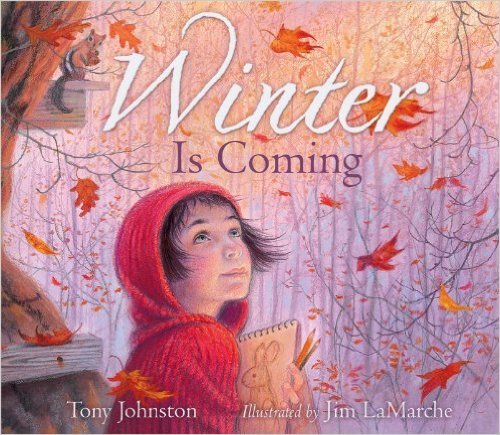
Winter is Coming by Tony Johnston and illustrated by Jim LaMarche

The Big Box by Toni Morrison and Slade Morrison, illustrated by Giselle Potter

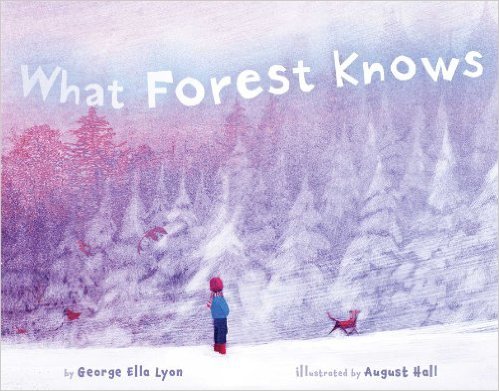
What Forest Knows by George Ella Lyon and illustrated by August Hall

Come On, Rain! by Karen Hesse illustrated by Jon J. Muth

One Today by Richard Blanko and illustrated by Dav Pilkey

Ubiquitous: Celebrating Nature’s Survivors by Joyce Sidman and illustrated by Beckie Prange
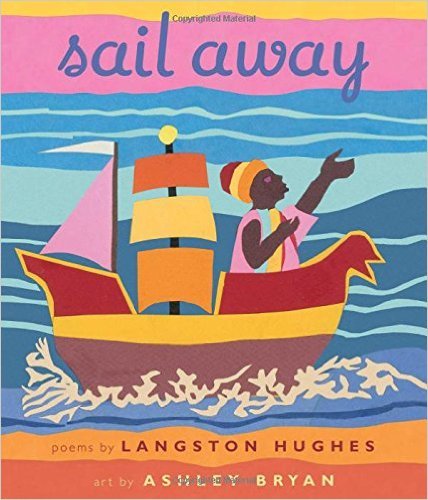
Sail Away by Langston Hughes and illustrated by Ashley Bryan

A Place Where Hurricanes Happen by Renee Watson and illustrated by Shadra Strickland

Instructions by Neil Gaiman and illustrated by Charles Vess
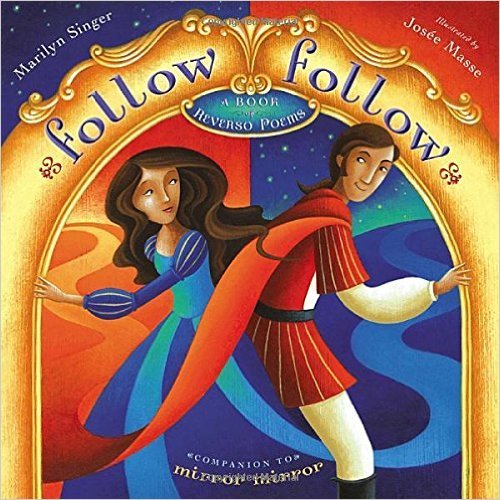
Follow Follow by Marilyn Singer and illustrated by Josee Masse
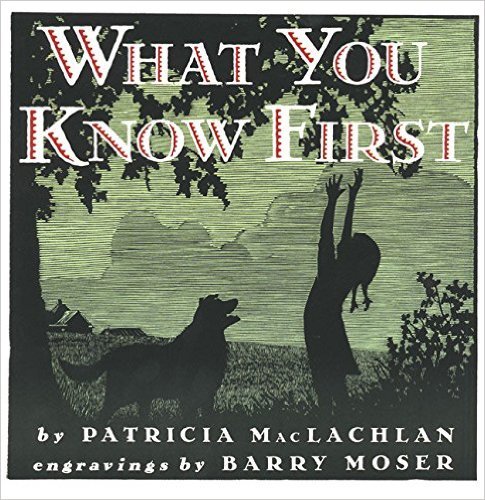
What You Know First by Patricia MacLachlan engravings by Barry Moser
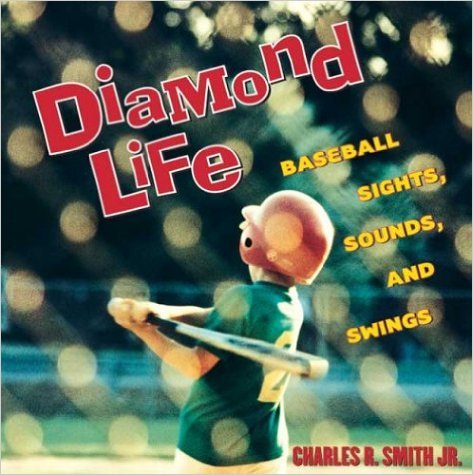
Diamond Life: Baseball Sights, Sounds, and Swings by Charles R. Smith
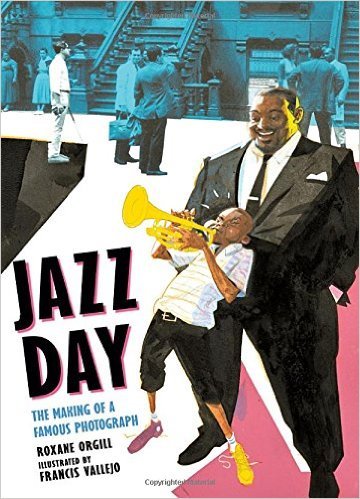
Jazz Day: The Making of a Famous Photograph by Roxanne Orgill and illustrated by Francis Vallejo
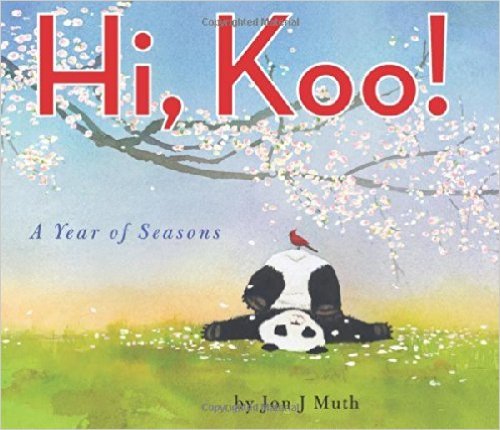
Hi, Koo! A Year of Seasons by Jon J. Muth
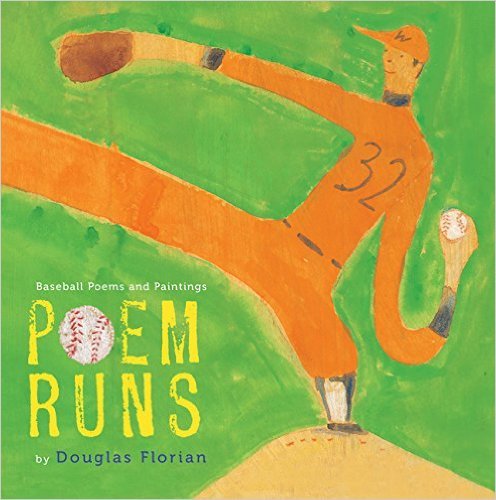

Black Cat Bone by J. Patrick Lewis and illustrated by Gary Kelley
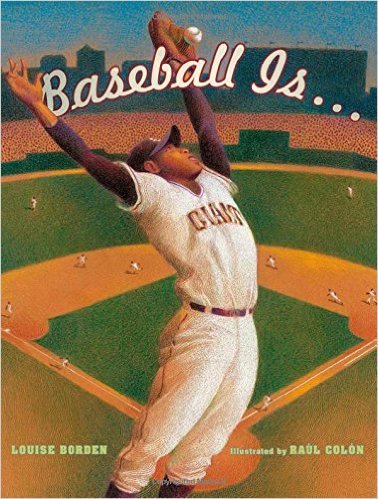
Baseball Is… by Louise Borden and illustrated by Raul Colon
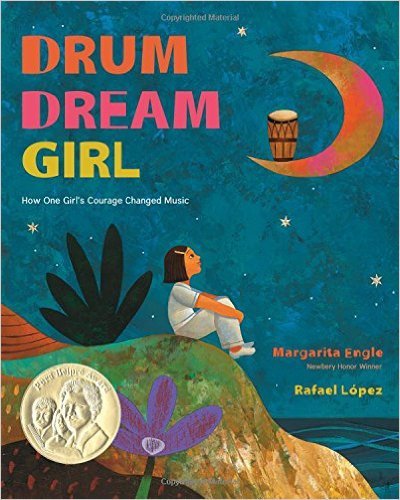
Drum Dream Girl by Margarita Engle and illustrated by Rafael Lopez

Dark Emperor & Other Poems of the Night by Joyce Sidman and illustrated by Rick Allen
I hope this list is helpful as you find great picture books to add to your classroom. Please add your favorites in the comments and to see our other lists of favorites, go here. Don’t forget about poem in your pocket day on April 21st.
Filed under: books, picture books


March 22, 2016
I Don’t Read…Thanks
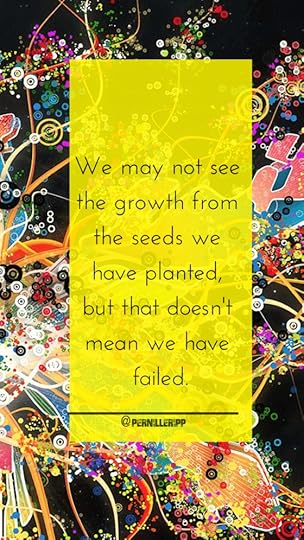
Before school starts, my school, Oregon Middle School, does two days of locker drop off giving students a chance to bring their supplies in, try their new lock, and even poke around the building. My first year there, I was at work in my classroom on the first day of this event. The books were all meticulously displayed. Brand new picture books lined our whiteboards. The bean bags were fluffed and ready. Every bin had a specific book faced out. My reading poster for the summer was up and I could not wait to see the reaction of my incoming students. Surely, they would be excited when they saw all of the books waiting for them.
A mother followed by her son came into the room and introduced themselves. He was one of my future students and so I eagerly shook his hand and asked him if he liked to read. As soon as the words left my mouth, his facial expression changed to one of pure disgust. He looked me straight in the eye and said, “I don’t read… thanks.” As if I had offered him a particularly disgusting food item. His mother looked at me and then added, “Yeah, he has not read much the last few years, we are not quite sure what to do.” I plastered a big smile on my face and told her we would work on it together. He did not seem impressed by my eagerness and asked if they could go now.
I left that day wondering once again why I had moved from the incredible oasis that is 5th grade to this new reality of 7th. What on Earth had possessed me to think that I had any chance in reaching 7th graders? That I knew anything about getting 12 year olds to read. There were days my first year that I cried. Feeling so lost in my mission to make kids like school again. There were days where I felt like I failed, that every thing I did made little difference and that surely one of these days those kids I taught would call me out as the fraud that I felt like. But they didn’t. Instead, they seemed to rally around me, around us, as we figured out how to make English a better class for them. As we figured out who we were together, who they were as individuals and how their new identities could involve being readers. I felt the urgency every day to make school better, as do so many of my colleagues, to make reading something worth doing, worth falling in love with. I still do. Even if kids still tell me that they don’t do reading, and good luck convincing them otherwise.
At the end of my first year, I had not changed that boy and his dislike of reading. There was no grand transformation or success story where all of a sudden he read every single night. That is not teaching. Teaching would be so much easier if we could see the influence that the learning may have on a child, but most of the time we don’t. So we can’t expect miracles every day, even if we hope for them, even if we work for them. Because if we do, we will only see ourselves as failures. As though we cannot teach well. Instead, we must hope for small changes that will someday lead to a big transformation.
That boy, he read, once in awhile. He abandoned books, still. He had a million excuses for why he did not have a book that day, but not always. So at the end of the year when he stopped me in the hallway, I would never have guessed the reason why. “Hey, Mrs. Ripp…have you read Gym Candy? It’s kind of mature but I really like it. The librarian found it for me. You should read it.” I stood there not quite believing what my ears had just heard. He recommended a book to me. Not because I asked him to. Not because we were in class. But because within the year we were finishing up he discovered that perhaps he could be a reader after all. That perhaps there were books for him.
So whenever a child tells me they do not read. That books are not for them. That they hate reading, I always think of the little change that perhaps I can help inspire. Of the small steps we can take together. Of how we may not see the transformation but that if we make loving reading an urgent endeavor then perhaps we are planting a seed. And one day, maybe years later, that child will not feel like they have to say “I don’t read…thanks” but will instead bring a book with them wherever they go because they cannot imagine not doing so.
If you are wondering why there seems to be a common thread to so many of my posts as of late, it is because I am working on two separate literacy books. While the task is daunting and intimidating, it is incredible to once again get to share the phenomenal words of my students as they push me to be a better teacher. Those books will be published in 2017 hopefully, so until then if you like what you read here, consider reading my book Passionate Learners – How to Engage and Empower Your Students. Also, if you are wondering where I will be in the coming year or would like to have me speak, please see this page.
Filed under: being a teacher, Literacy, Reading, Reading Identity, Student dreams, student driven


March 21, 2016
They Are Not All Struggling Readers
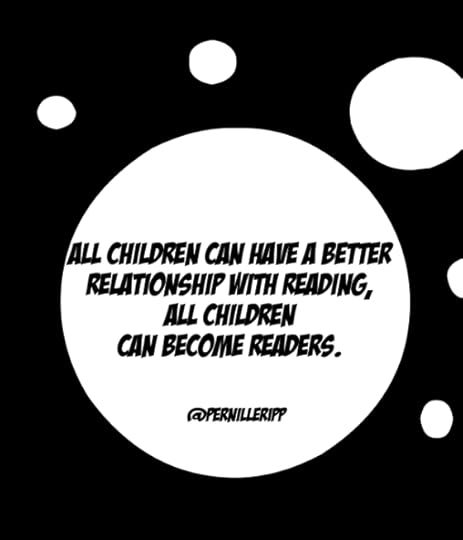
I think I have finally figured out my hesitance when it comes to the term “Struggling readers.” It is not that we do not have these types of readers in our midst; children where every word read is a victory in itself, where comprehension is a slow, painful discovery. Where we count their success not in books, but in pages. We all have readers who struggle. Yet, for too long, we have declared all of of our under-performing readers to be struggling. For too long we have taken this title and applied it to a whole group of students that may not be where they should be. We have labeled our students and then not gone beyond that, instead sticking to the term and everything it encompasses. Yet, this is not enough for the very students we teach, for within this term is a myriad of reasons why the students are not reading. Of why they struggle. Because the truth is they are not all struggling readers. There is so much more to them than that.
Some are resistant. They will fight us every step of the way, not because they can’t read, but because they won’t. They often start as struggling and in that very struggle is where their new identity comes from; reading is hard and so they will use everything they can to not engage in reading. They will abandon book after book because they have long since figured out that if they at least look like they are reading, we will not be quite as worried. They will tell us proudly that they hate reading, offering up the challenge as we start a new year. Being a kid who dislikes reading is not something they are ashamed of and they wear their hatred with pride daring every teacher to change their mind.
Some are lost. They used to love reading but lost that love a few years back. Sometimes through the very choices we have made as teachers, often times through a combination of many factors both within and outside of our control. It is not that they won’t read, they just don’t know how to fall back into it, how to find a great book that will bring them back to the reading fold. How to continue to grow as a reader rather than stand still. How to unslump themselves before their new habits of not reading become a permanent fixture of who they are as a person.
Some are confused. They think they are doing ok but continue to miss the point of the book. They struggle with meaning not because they cannot decode but because their mind for some reason cannot hold all of the information needed to make sense of what they are reading. Some of my most confused readers would tell you they are doing just fine, not because they are trying to trick you but because they truly believe it. They make as much sense as they can and then move on, wondering why others have not understood the book the same way they have. They read, even if reading for pleasure makes little sense to them when it is such a tiring process.
Some consider themselves bad readers. A label they have conjured based on grouping, interventions, or other things that we have used in our classrooms to help them achieve success. Oftentimes how they self-identify becomes a self-fulfilling prophecy because if you think you are bad at something, well then you become bad at it. Finding out what is causing them to think this way is a must as we try to help them back to reading.
Some are still a mystery. We cannot seem to crack the code of why reading is hard and sometimes it is because they do not know themselves. Sometimes it is because they have so many things working against them that it is hard to know where they start, and yet, we try every trick in our book and we ask as many questions as we can, trying to help them uncover a better reading identity.
There are more facets to reader identity than these, by no means is this an exhaustive list, because we teach children and children are complicated. So while I wish there was one label that could guide my instruction, that could help me make all of the decisions I need to make when I support my readers, there isn’t. And pretending there is does nothing to help me prepare. Does nothing to help me create an environment where students have a positive reading experience, no matter their self-identification.
Sure, we could label them all struggling, but it would not be enough to help them, to support them as they have a better reading experience. We must dig deeper into who they are. We must ask questions not just about their reading life, but their reading identity. We must create opportunities where they can re-frame the essence that they carry as a reader. Our instruction must go past that of “struggling reader” and instead see the bigger reason for why they struggle. While our journey to create passionate reading environments sometimes seems like an uphill battle, we must remember this; all children can have a better relationship with reading, all children can become readers. But they must know themselves first, they must know what helps or hinders, what motivates or what distracts. And so must we. It is too easy to be satisfied be applying one label to a group of kids, but it is not satisfaction we should be after, we should be after understanding, because through understanding we can teach better. We owe it to the kids, whether they struggle or not.
If you like what you read here, consider reading my book Passionate Learners – How to Engage and Empower Your Students. Also, if you are wondering where I will be in the coming year or would like to have me speak, please see this page.
Filed under: being a teacher, Literacy, Reading, Reading Identity


March 17, 2016
Great Books for Resistant Readers in Middle School and High School
I have been on the hunt as of late for books that I can hand to one of my hardest student groups; my resistant readers. Not just reluctant readers, not just readers that may have forgotten how much they like reading, no, the students that really do not want to read and would rather fake read every single day of the year rather than actually read. These are the kids I am book hunting for. So what are some of the books that seem to be hooking not just my reluctant readers but even my resistant ones (and almost every other reader as well)?
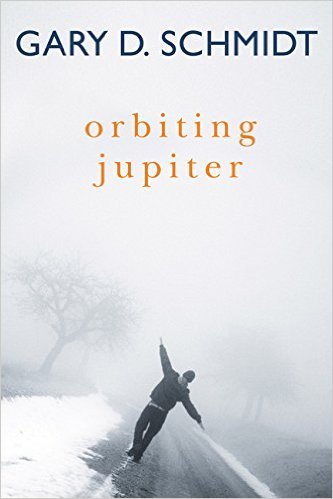
Orbiting Jupiter by Gary D. Schmidt has hands-down been the biggest game changer for a lot of my readers. I have 7 copies circulating and none of them sit on the shelf for more than a day. We have it on Audible as well for students who prefer to listen to their books.
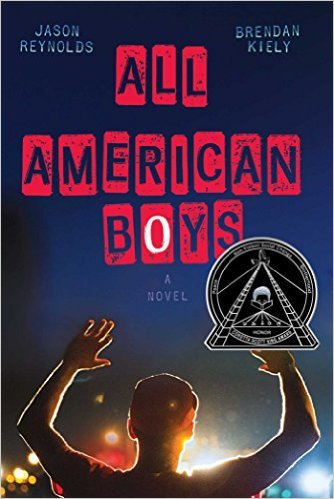
Another frequently read book (and listened to as well) is All American Boys by Brendan Kiely and Jason Reynolds. Masterful story telling and a gripping narrative means that this book has been flying off the shelves.
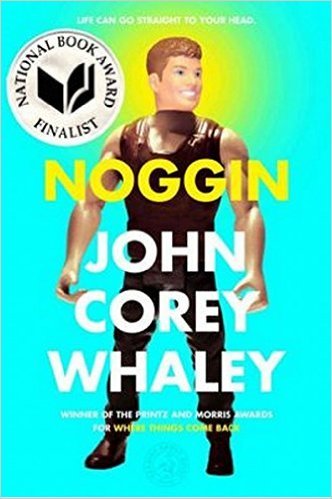
Noggin’ by John Corey Whaley is one that has been passed from student to student and is probably one of the most frequently book-talked books in our room. The story is easily accessible to many levels of reading development and grips the students with its premise of cryogenics and what it means to be 16 in a a 21 year old’s body.
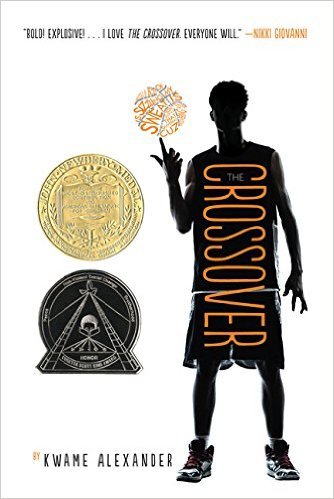
Who would think that our most resistant readers start to fall in love with reading through free verse? What Kwame Alexander’s The Crossover has done for our reading life cannot be underestimated. I have already had to replace my copies of this book this year and students are eagerly awaiting Booked on it’s arrival date of April 5th.
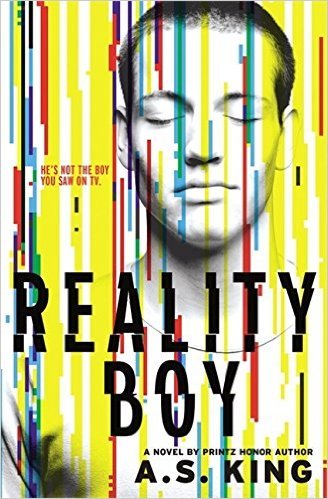
Reality Boy by A.S.King may have a very angry protagonist but I think the anger and “realness” of the books is what draws readers to it. This is another book that is often recommended from student to student.

Another free verse book, this one is House Arrest by K.A. Holt has been making the rounds as well. The discussions in class that this book leads to are powerful for many students.
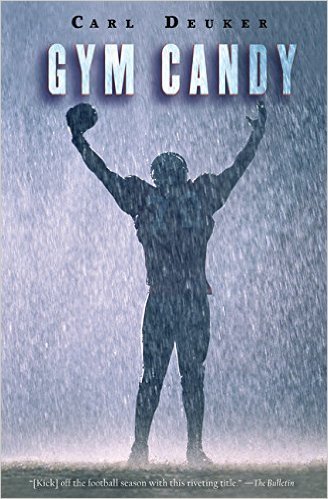
When a resistant reader recommended this book to me I knew it had staying power in our classroom. Carl Deuker’s Gym Candy is not your typical sports book and I think that is why it has been so popular with many resistant readers. It is a little bit raw and a little bit unresolved, a perfect choice for many of my more picky readers.
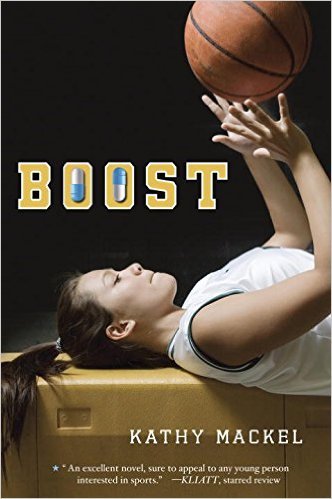
Boost by Kathy Mackel was book talked last week and has not been in my classroom since, quickly passing hands from student to student.
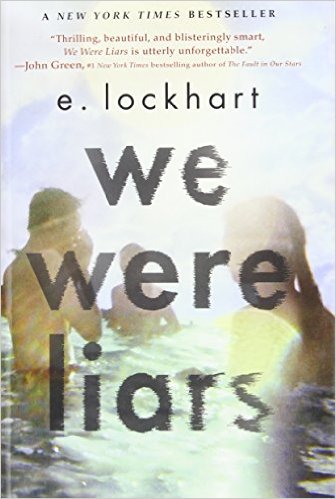
For the first time ever, I used We Were Liars by e.lockhart (Emily Jenkins’ pen name for her YA books) and I was not disappointed. It was clear that my group of readers quickly became absorbed as they begged for just one more minute of reading time.

It can come as no surprise that Monster by Walter Dean Meyers is a book many readers gravitate to. I have loved the reflections and thoughtful dialogue that this books creates but even more so how many students have recommended to each other.

Another no surprise here book is The Absolutely True Diary of A Part-Time Indian by Sherman Alexie. I always tell students that parents need to be alright with them reading it, which definitely does pique their interest, however, the books pulls them in by itself.
What are your must adds/must reads that will hook resistant readers?
Filed under: being a student, books, Literacy


March 16, 2016
Audience Needed for Elephant & Piggie Performances
The students have been hard at work figuring out how to be better speakers and they are now ready to show the world. Tomorrow my students will be performing Elephant & Piggie stories to their peers while I record them. We are looking for other classrooms to view some of these recorded performances and rate them using a simple form. Classroom audiences can be any grade as these are picture books being performed so we would especially love K-3. While students appreciate the feedback I give them, they really need a bigger audience than just their classmates and me to grow as real speakers.
If you are interested in perhaps viewing a few, please fill out the form below. You can view just one or as many as you want, what matters is the feedback! I will email you further details once the videos go live. Thank you so much for considering helping out these amazing 7th graders.
Filed under: being a student, being a teacher, global


On the Need for Classroom Libraries for All Ages

It took me 3 seconds to decide that I was going to move my entire classroom library into my 7th grade classroom. Coming from 5th grade I wasn’t quite sure what the use of a classroom library would be on my new adventure, after all, we would only have 45 minutes together, but I couldn’t leave my books behind. I couldn’t leave them in boxes. Even if we didn’t need the books as a class, I needed them. My books were home to me and when you change schools, when you change districts, when you change grade levels, you need all of the pieces of home you can find.
My husband carried every single box of books into my classroom. There were more than 100 and they took up an entire wall as I waited for my bookshelves to arrive. He didn’t mind too much, he has realized a long time ago that I my obsession with books is part of who I am. As I opened each box and shelved the books in their new home, I couldn’t help but wonder if any child would ever read them? If dust would soon become their second skin rather than the hands of children. Was there any point in my meticulous placement of books?
On the first day as a 7th grade teacher, I was not sure how the students would react to the books. After all, in elementary school, most kids expected a classroom library. Most kids were used to the access. So I waited and soon enough the comments came.
“Are these all of your books?”
“Have you read them all?”
“How many books do you have?”
“Can we read them?”
Slowly, students began to ask more pointed questions.
“How do I check this one out?”
“Can I read this one?”
“Did you read this book, I have wanted to read it…”
It turns out my worry was unfounded. It turns out that middle schoolers in all of their bravado love classroom libraries as much as younger kids. That middle schoolers get as much use out of a classroom library if we let them. That they needs books now just as much as they needed them then.
In the past 2 years as a 7th grade teacher our classroom library has only grown. Teaching more than 100 students quickly made me realize just how many books I need to keep all readers invested and engaged with their reading. In fact, I started with the research on classroom library sizes and knew that while these were great starting points, that was exactly it, a start. When you teach that many students with reading abilities ranging from 2nd to 12th grade, interests spanning all topics, you need way more than you think, because middle schoolers can be fickle, so the message that my classroom library sends is; there is always another book waiting, there is always another chance at falling in love or remaining in love with reading.

And it is not because we do not have a school library, we have a beautiful one, one that is filled with incredible books and staffed with incredible people. But when the students are with me, during our 45 minutes of instruction every day, they also need books right at their fingertips. As Donalyn Miller and Teri Lesesne have said even a school library right across the hall from you is too far away for many students. And it is true, even a beautiful, well-stocked school library is too far away when a child needs a book right then. Because our students need to be enticed by another book the moment they finish or abandon their current one. They need books as a way to create community as they share their love (or dislike) of them with others. They need books to hand to their friends, to their teachers. They need books that will inspire them to read more. To discover who they are as a readers and who they want to become. They need to be able to go into our library and come out with something that speaks to them. Not just because the teacher tells them they have to read or the assignment requires them to.
I asked a child last year if our classroom library made a difference and his answer was simple yet powerful. “It made the biggest difference because the books were right there, so I read them.” And that is what I see every single day in our classroom, books being read because they are right there and there is no option to not read them.

As we increase the demand on students to read for knowledge rather than pleasure, we see their love of reading decline. Students have less time and less choice as they go through their years of schooling. So is it any wonder that by the time students graduate high school, 33% of them will never read another book? Having a classroom library in our middle and high school classrooms is therefore not a frivolous thrill, it is a vital necessity to create passionate reading environments. Having a classroom library should not be an investment we only make for our younger students, but should be one we make for all students, no matter their age. And it is not too late to start right now. We start by buying one book, then another, and we build our collection day by day. We book talk and we hand books to students. We create displays that entice, we create time to read, but first we have to have the books and access to them for all the kids we teach.
Our collection now probably holds more than 1,000 books and I know that I still do not have enough. After all, there are still students that search our shelves and come up empty-handed, but at least they had books to browse, at least they had books to try. I continue to add whenever I can, knowing that one day I will run out of walls pace and bookshelf space, but that when that day comes it will be a day of celebration because perhaps we now have a book for every interest, for every reader, for every child we teach.
For more ideas on creating a classroom library and knowing books to purchase, go here.
If you like what you read here, consider reading my book Passionate Learners – How to Engage and Empower Your Students. Also, if you are wondering where I will be in the coming year or would like to have me speak, please see this page.
Filed under: being a teacher, books, classroom setup, Literacy, Reading


March 13, 2016
How I Use Picture Books in Our Middle School Classroom

Wherever I go I seem to bring the love of picture books with me. In fact, whenever I travel, I try to pick up at least one new picture book from wherever I am as a way to remember the adventure. I have lost count of the picture books in my own house. In fact, we have long ago run out of shelf space at home and some now reside to my dismay in boxes instead of out in the open. Our picture book collection in our classroom has surpassed 200, with displays wherever there is a ledge, with piles on the tables, and special books waiting to be shared. Being a picture book aficionado comes at a wonderful, cluttered, price.
I have written before of why I use picture books with my middle school students, the changes it has created for us as we build our community of readers. I have shared lists upon lists of our favorite books as well, hoping to help others find the very best value in the books they bring in, hoping to inspire others to make them an integral part of their classroom. This is not a post on the why, but instead on the how.
I often get asked how I use picture books as a teaching tool. What does that actual process look like, so hopefully this will clear up some of those questions.
Which book I choose to share depends on the lesson. I treat it much like a short story in what I want students to get out of it so it has to suit the very purpose we are trying to understand. I introduce the concept by sharing a story and then I ask my students to come as close as they can to the rocking chair in our corner. Once settled, whether on the floor, on balls or on chairs, I read it aloud. We stop and talk throughout as needed but not on every page, it should not take more than 10 minutes at most to get through an average size picture book. If it is a brand new concept I may just have students listen, while other times they might engage in a turn-and-talk. I have an easel right next to me and at times we write our thoughts on that. Sometimes we make an anchor chart, it really just depends on the purpose of the lesson. Often a picture book is used as one type of media on a topic and we can then branch into excepts from text, video, or audio that relates to the topic.
Because I teach the same class 5 times in a row, I often switch out the picture books I use with the different classes. There are some that you can still love reading after 4 times, while others get to be a bit tedious, so I adjust as needed. This is why having a lot of great picture books to choose from is something I am committed to.
I do not have multiple copies of really any picture books, I don’t see it as needed. Instead, I pick the picture book to read aloud and then find “companion books,” other picture books that share the same concept, for example easily identifiable themes. These are spread out on tables, waiting for the students to select them. This way, when I ask students to work with them they are truly testing out the skill and not just whether they can spot the same things that we just practiced together. Often times, students can choose to work with a partner as they explore their self-selected books.
Some times students write after reading the picture books, other times they do not. Sometimes we use them as mentor texts where we mimic the way language is used or how a story is set up. I use them a lot as a way to do a quick check-in to see if students need re-teaching or are on the right path. If students write about them it tends to be just one paragraph or so.
We do use some of the same picture books again and again as a way to practice close reading but also as a way to see different aspects of the same story. Once students have heard or read it to discover the story, we can focus on other things such as language use or author’s craft as we rediscover it.
Picture books tend to stay in the classroom because they get lost really easily, however, students may ask if they can borrow one to take home. Usually I say yes as long as they bring it back the very next day.
Picture books are shelved together in our classroom but not organized by theme or author. I simply do not have room for splitting up the groups, so I try to display the picture books by theme in our classroom instead. For example, whenever it is a new month or after a break, our display is always changed out. I want students to want to read them as much as possible and a fresh new display helps entice them.
When a new picture book enters our classroom, it has already been read by me and I may even book talk it to students. I should keep a list of which picture books would be great for what, I guess my lists of picture books to use kind of counts as that, but I do not have a personal list. This is on purpose because it offers me chance to reread books I may have forgotten and browse my own collection with fresh eyes when I search for that perfect book.
I am amazed at the sheer usage I get out of the picture books in our room from a teaching stand point, but also so grateful for the reading experience they provide for my students. Picture books may just be a key to helping students fall in love with reading again.
If you like what you read here, consider reading my book Passionate Learners – How to Engage and Empower Your Students. Also, if you are wondering where I will be in the coming year or would like to have me speak, please see this page.
Filed under: being a teacher, books, Literacy, picture books, Reading


March 12, 2016
On Reading Gaps and Book Recommendations

I have been racing through the pages of Carl Deuker’s Gym Candy this weekend. Finding every moment I can to read it. Not because I love football books, anyone who knows me would probably laugh at that considering I don’t watch any football, ever. Not because I am under a special deadline to get it done. The book is mine, I can read it as slowly as I would like to. No, because the book was recommended to me by an 8th grader and I know just the right 7th grader to pass it to. But first I want to read it, to add it to my repertoire of books my resistant readers may embrace. And so this weekend, Gym Candy and I have been spending a lot of time together and it has led me to contemplate my own reading identity.
I speak and write (and even think) a lot about how our classroom needs to be filled with books and children eager to read them. How one of my biggest missions in teaching is to help students fall in love with reading or remain there. How we must create interest for many genres of books and then expose students to them through informal book talks or reading displays. But what about our own reading identities? Do we give as much thought to what we read, what we share, what we embrace, as we do that of the students? Are we branching out and putting ourselves through the very motions that we try to put our students through?
I know I am not. If you were to look at my reading display you would notice a pattern; science fiction, fantasy (but not too fantasy-y) and a great realistic fiction story now and then. Mostly new books, geared at 12 plus in ages. Even though I should be reading for the Global Read Aloud. It seems as if I have found myself as a reader a long time ago and firmly stayed there, happy with the destination. Yet, within my own reading preferences I am creating limitations in how I teach. I am missing out on entire genres of books that some of my students might fall in love with. I am becoming less of a book lover and more of a genre lover. And that is a problem.
When we only read for ourselves, even with a mission to find great books to share with students, we forget to study our own habits. We forget to see the book gaps, which many have blogged about before, and how these gaps affect us as book recommenders. If you had asked me to recommend a great sports book, my list would have had 2 on them, now it has 3, and that is still not enough.
So when my former student told me to read Gym Candy he only had to mention it twice. Not because I owed it to him and our continuing book conversations. Not because this would probably be the only way he would ever recommend another book to me. While both important, these were not the biggest reasons, but instead because it allowed me to make an investment in the students I have yet to reach. In the students who need my experience with books to guide them. For the students who don’t know what to read and hate the very genres I love.
So I pledge to read more widely. I pledge to ask more questions. I pledge to not judge and I pledge to recognize my own deficiencies in order to inspire my students to do the same. There are entire genres I would never read on my own where I would be just fine as a reader, but I would not be fine as a teacher. So as I finish the pages of this book, I look forward to the next challenge and not to the comfort of the books I would naturally read. Who knows; there may be an entire genre for me to fall in love with. I just need to find it first.
If you like what you read here, consider reading my book Passionate Learners – How to Engage and Empower Your Students. Also, if you are wondering where I will be in the coming year or would like to have me speak, please see this page.
Filed under: being a teacher, Literacy, Reading


March 11, 2016
12 Word Book Summaries – A Great Way to End our Book Clubs
Once in a while I get a surprise package of books at my house. It honestly feels like Christmas. And while I love my chapter books as I try to figure out who the Global Read Aloud contenders should be, when picture books show up it is an even bigger celebration. So imagine my delight when Chronicle Books sent me 4 of their Cozy Classics.

While they are meant to be baby board books, I immediately saw great potential for them as a tool in the classroom. Having just finished their self-selected book clubs, I wanted my students to somehow wrap up their projects while also doing some deeper analysis of the stories they had read and discussed. Summarizing and analyzing are both skills we work on throughout the year, as is our public speaking skills. Yet I did not want them to write a paper about their books, since I had had them do other writing throughout. So this is exactly why the Cozy Classics were perfect; would my students be able to succinctly summarize their entire book in just 12 words?
This week I read War and Peace to my students and once their excitement died down I set them on their task; create a 12 word book summary that summarizes the entire book and then perform it for the class. Throughout the week they would get a few blocks of 5 to 10 minute times and today they performed them. The results were fantastic; students clearly had not only given a lot of thought to which words would best describe their stories, but also in how they should perform them for the class.
Here is one group performing their summary for Jennifer A. Nielsen’s A Night Divided, which by the way is a wonderful book to have in your classroom library.
Sometimes it is the smallest ideas that can have the greatest impact.
If you like what you read here, consider reading my book Passionate Learners – How to Engage and Empower Your Students. Also, if you are wondering where I will be in the coming year or would like to have me speak, please see this page.
Filed under: being a teacher, books, Literacy, picture books, Reading, Student Engagement





